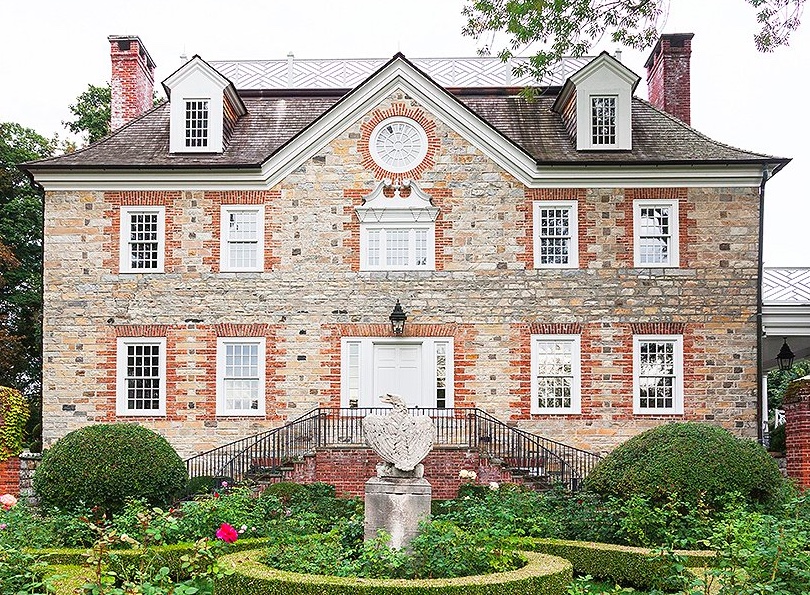
Inside the Next-Level Elegance of Carolyne Roehm’s Connecticut Estate
via: One King’s Lane
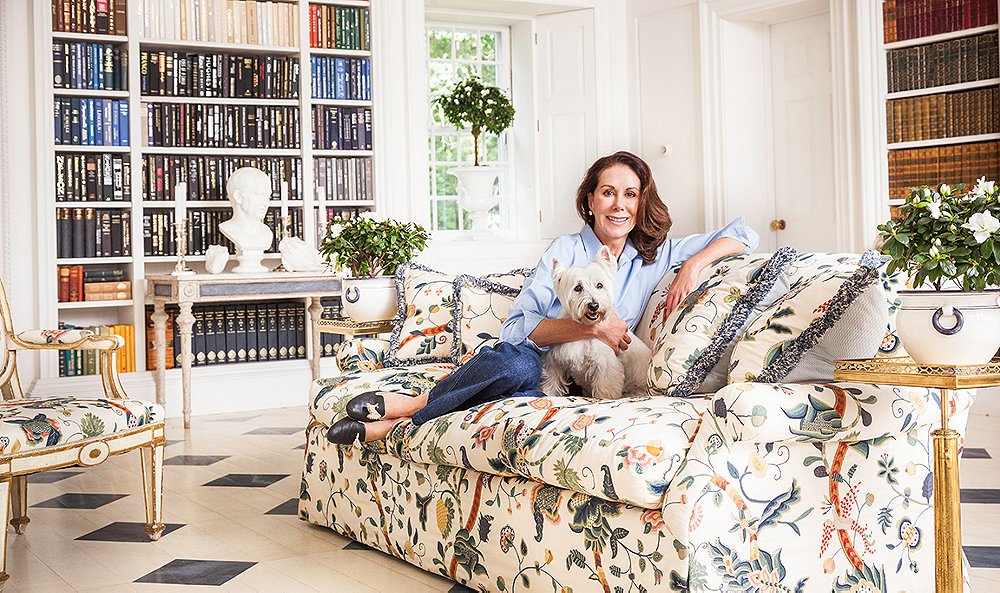
As the world goes ever more casual, it’s refreshing to encounter Carolyne Roehm, who celebrates the beauty of classical design, formal gardens, and sparkling dinner parties. It’s one thing to admire these things in the abstract; it’s another to live amongst them, day in and day out. But she does. And that’s precisely what she writes about in her lush, inspiring books: ways of elevating the everyday. Her latest publication, At Home in the Garden, sums up her vision of what the garden can be in one’s life.
Carolyne’s ultimate canvas is her beloved Connecticut retreat called Weatherstone, tucked in a pastoral corner of Connecticut. There she’s created a beacon of neoclassical architectural; true to the era that inspired it, not one of the antiques inside is later than 19th century. And it’s wrapped with parterre gardens—those geometric gardens you might have seen in Versailles.
But before we get carried into another century, let us say this: Carolyne’s no anachronism. She’s as busy and Scandal-addicted as any of us. Her restoration projects and her output of books and blogs makes the head spin. Yes, she’s listed in the International Best-Dressed Hall of Fame, but most days are so busy that she’s been known to wear yoga pants, “and then I never get around to doing any yoga!” She’s like her home in that way—full of graceful refinement but grounded in lots of natural beauty. Step inside Carolyne’s world.
Rebuilt after 1999, the house took all its architectural guidance from the original 1765 Georgian house. It’s surrounded with 59 acres of pastoral land, gardens, and ponds.
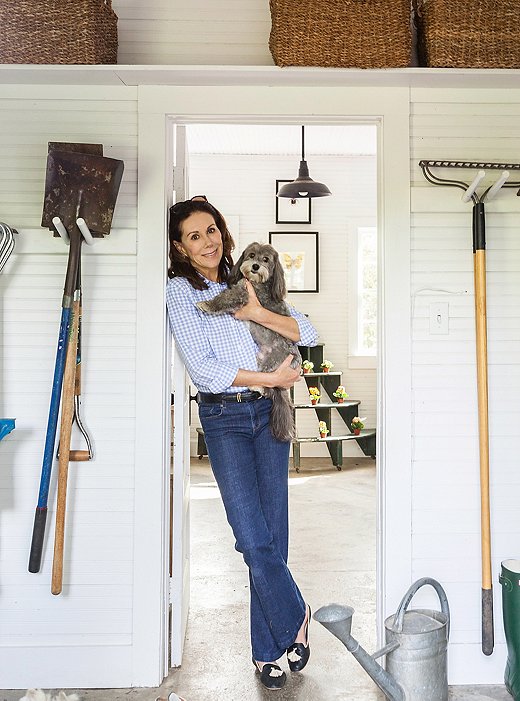
Carolyne in the doorway of her glasshouse.
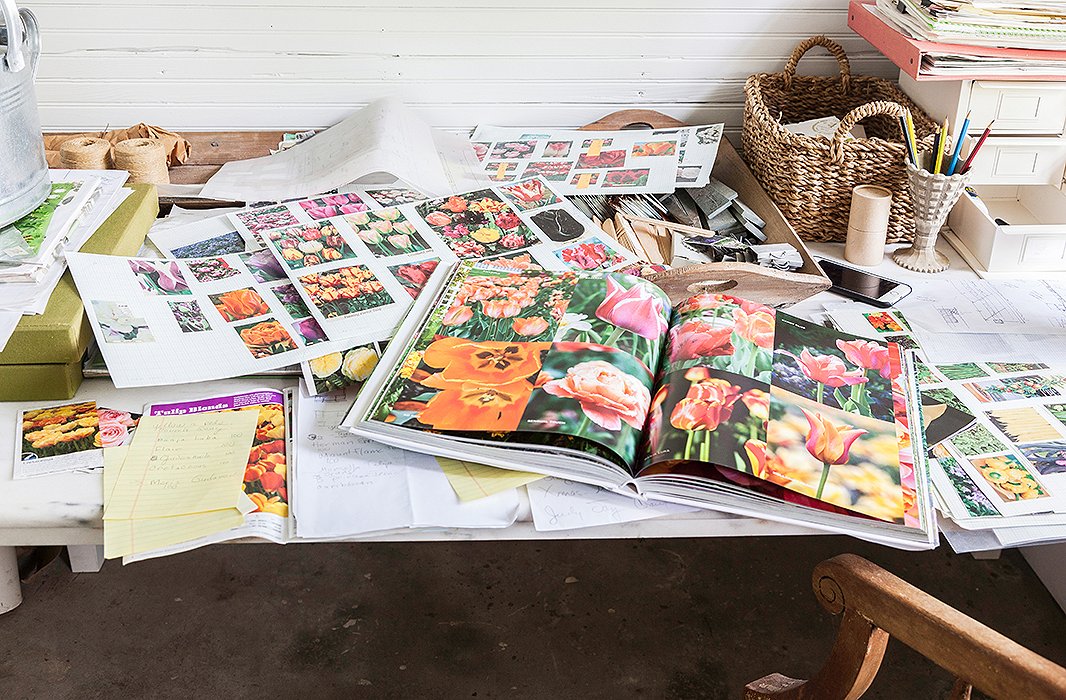
The lush illustrations in At Home in the Garden take one through the seasons in Weatherstone’s gardens, from the peak spring flower season to the lovely whites of winter.
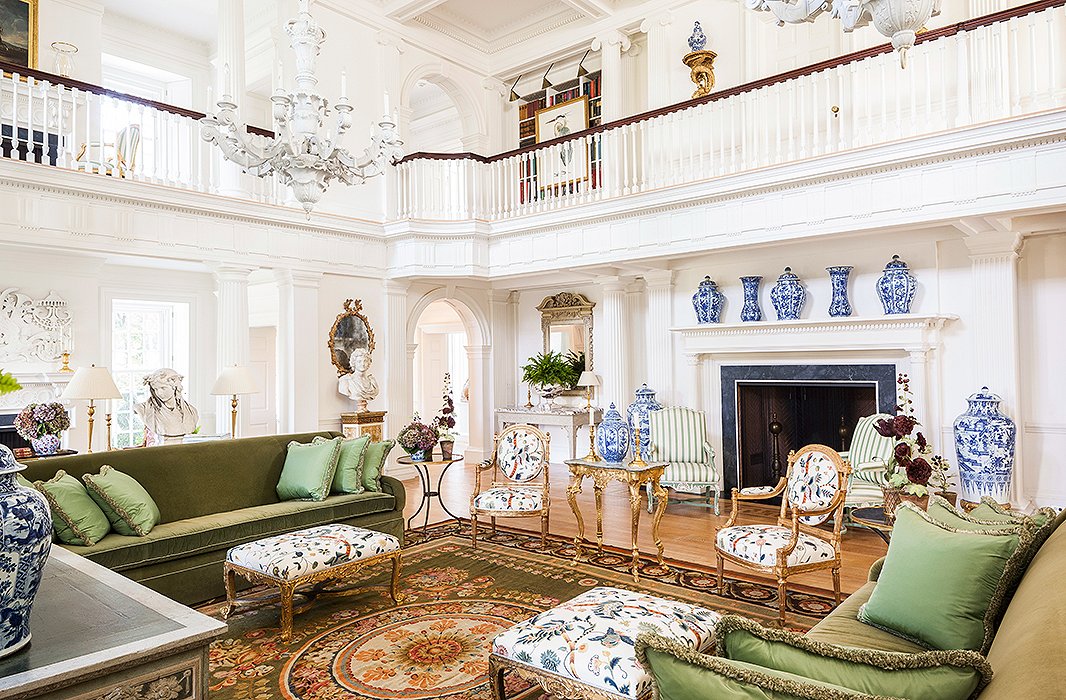
“I have many things that were made in China 10 minutes ago, but my best antique Chinese porcelain is all in the great room,” Carolyne says. These pieces were mostly chosen for their dramatic scale and the clarity of the blue against the white. The needlepoint rug came from David Easton’s Long Island home, while the pair of gilt chairs are English.
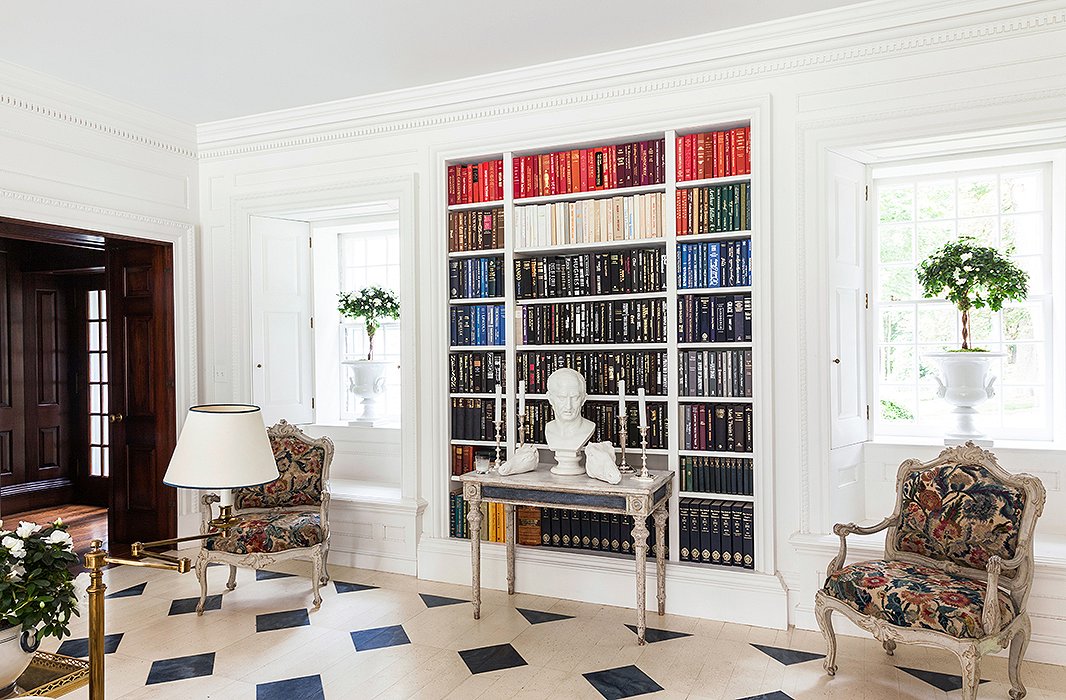
The effect of painted furnishings, painted floors, and a white paint custom-blended for the walls is totally fresh and sets this space apart from the dark wood hallway to the left.
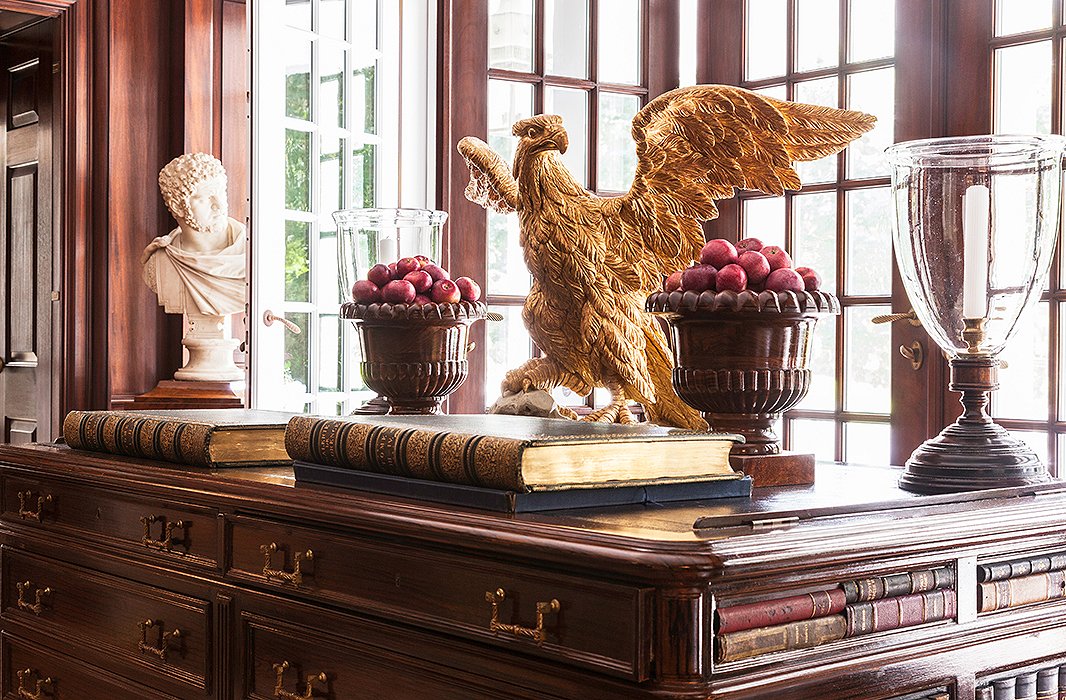
An English library desk is topped with leather, making it ideal for reading the antique books.

Carolyne worked for Oscar de la Renta early in her career, and that shaped her feelings about textiles. “When I find a fabric to use, I truly love it,” she says. “I want you to be able to see the pattern and not have it buried by other stuff.”

While graceful in its outlines, neoclassical furniture is often hyperdetailed in its ornamentation and features motifs such as acanthus leaves, garlands, and other naturalistic forms found in ancient Greek and Roman sculpture.

Each room features a different tone of white on the walls, achieved by mixing up to four paints. Here, the white sets off the classical elements of a pilaster next to a gentle arch.
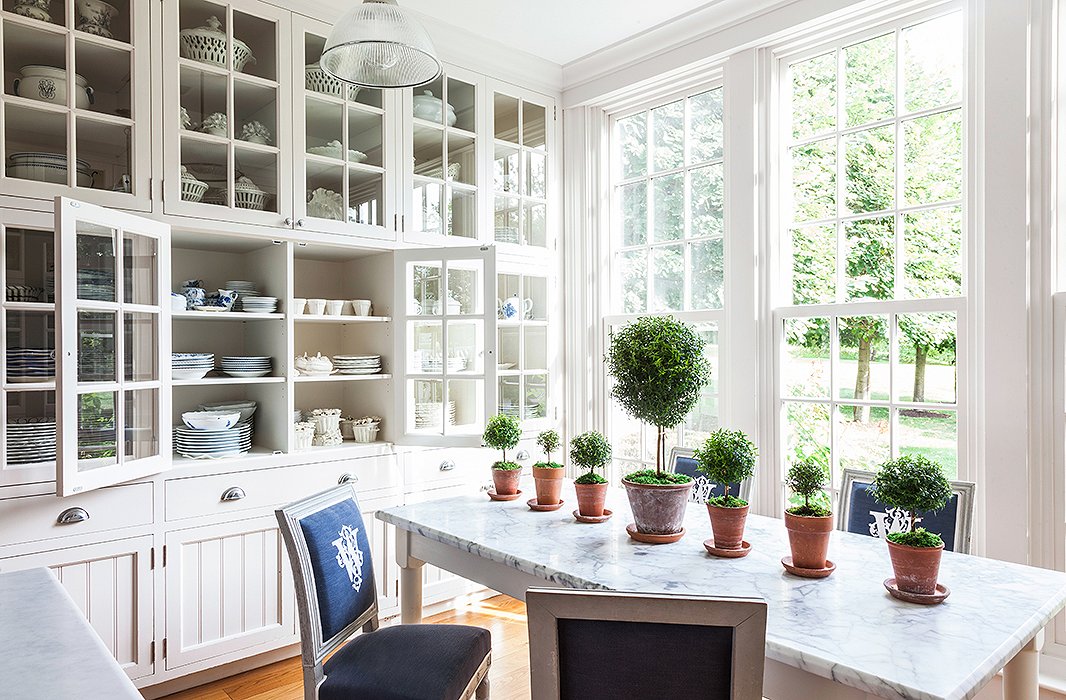
Many of her patterns are antique, with 8 or 10 settings. For larger parties she’ll lean on reproductions, a number of which are blue and white (that’s “the backbone” of her collection, she says).
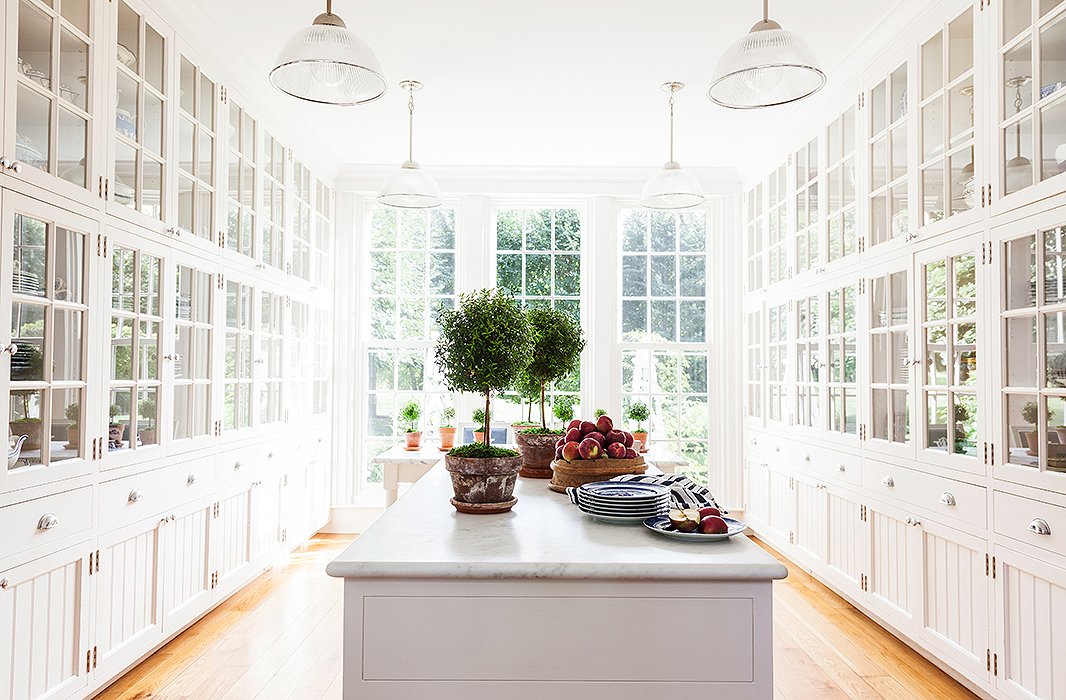
While outfitted with modern features such as a vast marble island, the breakfast room has that key classical element: perfect symmetry.

Carolyne “prettified this little glasshouse” with lots of geraniums and a mix of metals.
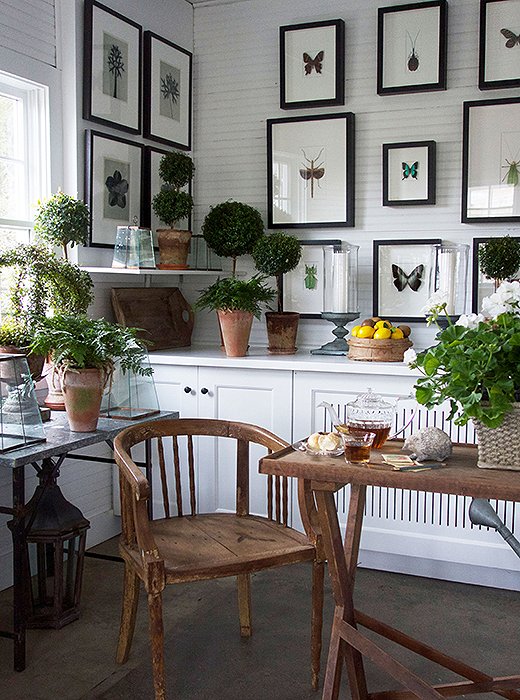
This photograph of the nook by Carolyne’s collection of butterflies comes from At Home in the Garden.


The little office in the glasshouse holds all of Carolyne’s gardening catalogs.

The Rubelli fabric on a pair of carved Russian chairs, which were in Carolyne’s former Paris apartment, inspired the green palette throughout this room, including the clipped-velvet damask on the sofas.

The pair of verre églomisé—French for “gilded glass”—mirrors reinforce the light-filled atmosphere of this room.

A view from At Home in the Garden; Carolyne writes: “If you can create a landscape that doesn’t only come to life in spring, it will be a source of pleasure—even when it’s too cold to venture out.”

The grounds include a parterre garden (shown here in a photograph from At Home in the Garden). “Until I made my first trip to Europe, the term formal garden was to me an oxymoron,” Carolyne says. “Gardens were places where you ate tomatoes off the vine with one hand and pulled up carrots with the other.”

A view looking over the rose garden—which Carolyne calls in At Home in the Garden “a formal garden, but a happy one.” Korean boxwood, which survives New England winters well, frames the roses.



